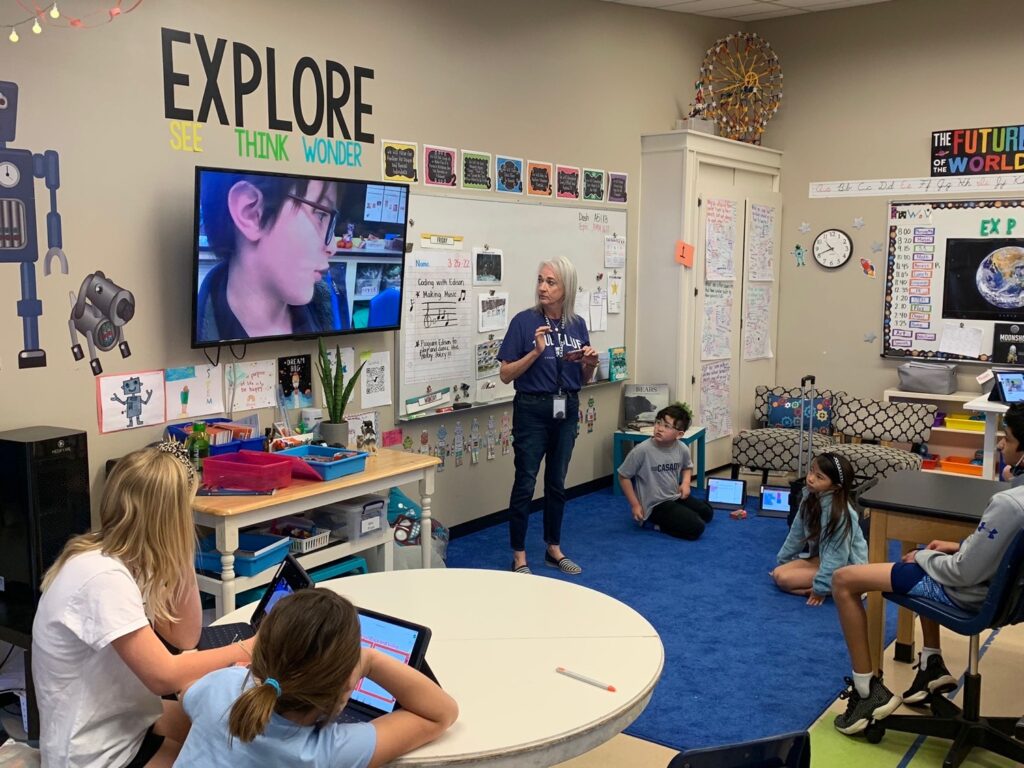On Fridays this year, my third grade STEM students have opportunities to develop their coding skills using Edison robots. Over the years, in addition to Edison, I have used BeeBot robots, Thymio robots, and the Dash robot in after-school coding clubs as well as summer coding camps. I love the ways EdScratch and the Edison robot challenges foster independent student learning, allow for multiple pathways to a coding challenge, and support an open-ended approach to the development of computational thinking skills.

Physical computing is important and powerful. As we find in mathematics and with the importance of manipulatives to help students move move from concrete to abstract thinking, or from abstract to concrete thinking, coding robots can help students make these transitions and connections in powerful ways.
On Friday last week, students in all four of my Science classes explored ways to create music using code. Specifically, their challenge was to code “The Hokey Pokey” and make their Edison robot play the song as well as dance.
Some coding curriculum lessons challenge students to move through a sequential series of puzzles. Those kinds of lessons have value and an important place in student learning, since they “chunk skills” to help build foundational coding abilities. However, I really enjoy using the Scratch coding language for open-ended problem solving, allowing students to find creative coding solutions. These kinds of challenges invite students to creatively experiment and discover different pathways to a coding challenge.
Everyone’s code does NOT look the same! These kinds of coding challenges also work well in collaborative settings. I enjoy asking my students to partner up and work with a classmate. We know collaboration and communication skills are vital to develop in school, and these robotic coding challenges provide great opportunities for students to practice working together in teams.
Coding under the constraints of our class meeting times is also great for the development of “a growth mindset.” This is something we have been talking about and working on for several years at our school. Not all students are able to complete coding challenges fully during our class time. We talk about how “we’re not there YET,” but we will keep iterating and trying to find different solutions that can address our challenge of the day.
I love helping my students develop this rich set of skills during our STEM robotics lessons! If you have not yet checked out Edison Robots, the Scratch programming language, or “EdScratch” (the modified version of Scratch used by Edison) I encourage you to do so! They are wonderful platforms for student learning and computational thinking!
